
Some time ago Ernie Romers (director of WatchUseek) sent me a watchwinder to play with. So I did and here are my findings of this neat little machine.
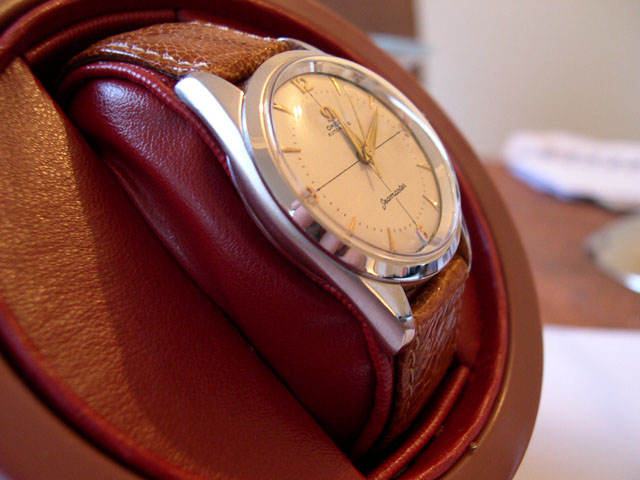
This watchwinder is not the regular wooden watchwinder with a 400 Euro pricetag on it, but instead this one is made out of plastic, suitable for one watch (one size fits all so it seems, from my vintage 34mm Omega Seamaster to a 44mm Sinn 142St.S) and available for only 39,90 Euro (shipping excluded). There, I said it. At least now you want to read on and check if this can be true!
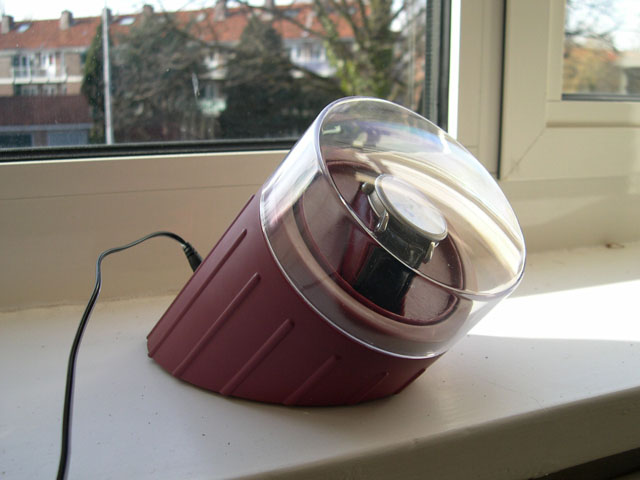
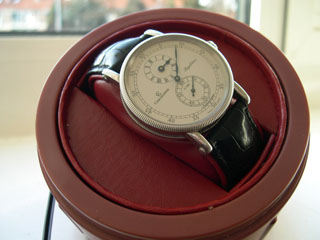 |
So I tried a few of my automatics on this little machine. I won't bore you with all the details, but I tested watches with the following movements: -
Omega caliber 501, winds in both directions; |
At this moment, I do not have the common used ETA 2892-A2 or ETA/Valjoux 7750 movement in my possession. The winder turns in both directions, so clockwise and counter clockwise. If you have a movement and you don't know in which direction it winds, use the look-up table at http://www.orbita.at/17100-1.htm.
| First, I tried the Rolex watch with caliber 3135 movement. I used the clockwise winding direction and before I put it on the winder I made sure the watch was fully wound. The specifications on the box didn't say how much rotations this winder makes, but it stops after a while and resumes after a period of silence. At first this worried me, but then I realized that even this low-cost winder only makes a maximum number of turns per day, like the more expensive winders do. I couldn't find the exact number of turns per day, but I guess it won't exceed the common number of 650-800 turns per day. The watch kept running perfectly on time, so I guess it works fine for this Rolex movement, commonly used in their sportsmodels and Date-Just models. | 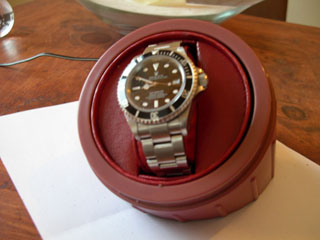 |
|
To keep it short, the winder worked fine on all movements listed above. The winder uses a correct angle to keep the rotor spinning and works in both directions. However, for watches with movements which can be wound in both directions, some winders have a special program to wind in both directions. This winder doesn't, you have to set the winder to either clockwise or counter clockwise, so make sure you checked the look-up table to see which direction your watch needs to be wound. In general, ETA movements wind in both directions and the common used Valjoux 7750 for chronograph watches winds clockwise. As you can see on the picture on the right, the switch is located on the back of the winder. It is either off, direction I or direction II. |
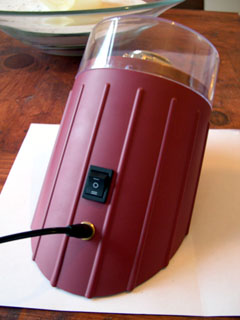 |
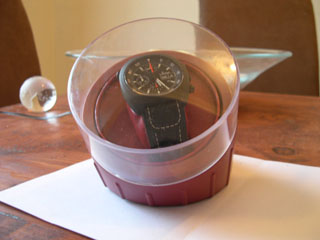 |
When I was home one day for the whole day (which isn't very common, sadly enough) I put the Sinn 142St.S (Lemania 5100) on the winder in the livingroom and checked if the noise of the winder would bother me. It didn't. It isn't silent, but you have to do your best to hear the winder spinning. When you have background noises, like passing cars or people or your TV/Radio, you won't notice it at all. The plastic cover isn't very nice to look at, but it protects your watch from collecting dust. The winder is heavy enough to put it on top of a bookshelf or other closet. You don't have to worry it falls of when someone bumps the bookshelf (kids, dogs or by yourself :-)). |
The winders comes with a 220-240v adapter (European voltage), and is probably available in other standards as well, since my adapter has a big '3' sticker. I assume '1' and '2' will be other countries, other voltages and other pins. You can check if there is a suitable adapter for your country in the WatchUseek Shop.
The winder
comes in three colors, which are (bordeaux)red, black and silver like
you can see below.
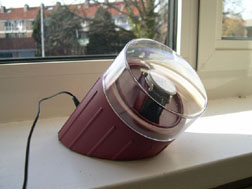 |
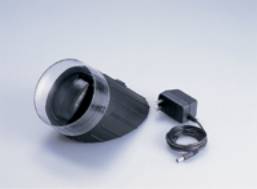 |
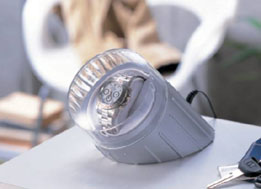 |
So, what are the pro's and cons of this winder. I think these are obvious, but here you go:
Pro's:
-
Low price;
- Watches fit from small size
to the larger models (at least up to 44mm);
- Small machine, doesn't have to be 'in-sight';
- Works well with every movement
tested;
- Three flavors!;
Cons:
-
Plastic cheapish look (but hey, it is cheap!);
- No battery operation, so you
can't use the winder in a safe;
So if you are like me, not in the position to buy an expensive watchwinder (it also doesn't make sense to me to buy a 400 Euro winder for a 1200 Euro Sinn for example), this may be the solution. For this price, it is even justified to wind your cheapest automatic!
So go to the WatchUseek website and mail them to order one (or more). Ernie will be happy to receive pre-orders!
| 2005, Robert-Jan Broer |